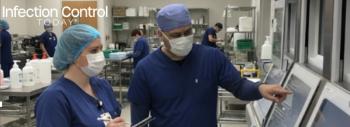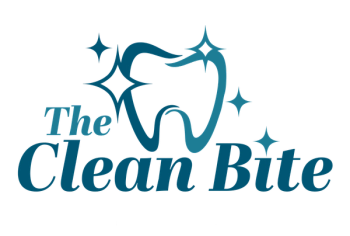
The Clean Bite: Real Talk About Infection Control—Single-Use vs Reusable Dental Supplies: What Is the Difference and Why It Matters
Sherrie is back! In this The Clean Bite, she discusses single-use vs Resusable Dental Supplies. Ultrasonic scaler tips, burs, and endodontic files are often reused despite being marketed as single-use. How many patients are at risk from shortcuts in reprocessing?
Welcome back to The Clean Bite! I’m your host, Sherrie, and today we’re diving deep into a hot topic in the dental world: Single-use vs Reusable Dental Supplies
In the ever-changing landscape of dental care, infection control, patient safety, and operational efficiency are paramount. One area that often confuses—and deserves more attention—is the distinction between single-use and reusable dental supplies. While these terms are frequently used interchangeably, they carry different implications for practice management, environmental impact, and regulatory compliance.
Today,we are going to talk about the nuances between single-use and reusable items, their roles in modern dentistry, and how dental practices can make informed decisions that balance safety, sustainability, and cost. For the sake of today’s discussion, this does not include reusable dental instruments that have their own reprocessing guidelines.
Understanding the Terminology
What Are Single-Use Dental Supplies?
Single-use items are designed to be used once on a single patient and then discarded immediately. These products are not intended to be cleaned, disinfected, or reused under any circumstances. Some are typically sterile and packaged individually to prevent contamination.
Examples of sterile items: (This is not a comprehensive list).
- Sterile surgical gloves
- Needles
- Disposable scalpel blades
- Suture needles
- Endodontic files (rotary files are in sterile packaging)
- Surgical burs
Examples of nonsterile items: (This is not a comprehensive list.)
- Exam gloves
- Saliva ejectors/high volume evacuation (HVE) tips
- Cotton products (2x2, cotton tip applicators, cotton rolls)
- Patient bibs
- Isolation barriers
Why the Distinction Matters
Infection Control and Patient Safety
Infection control is the cornerstone of dental practice. Single-use items eliminate the risk of cross-contamination because they are sterile and discarded after one use. This is especially critical in procedures involving blood, saliva, or mucous membranes.
Disposable items, while also discarded, may not offer the same level of sterility. For example, a disposable tray cover protects surfaces but doesn’t require sterilization. Misusing a disposable item as a single-use sterile tool—or vice versa—can compromise patient safety and violate health regulations.
Regulatory Compliance
Dental practices must adhere to guidelines set by organizations like:
- ADS (Association for Dental Safety)
- CDC (Centers for Disease Control and Prevention)
- OSHA (Occupational Safety and Health Administration)
- ADA (American Dental Association)
- Federal and State Agencies (Environmental Protection Agency, Food and Drug Administration, state health departments)
These bodies refer to manufacturing guidelines to provide clear definitions and protocols for single-use and disposable items. Misclassification or improper handling can lead to fines, legal issues, or reputational damage.
For instance, reusing a single-use item (exam gloves)—even if it appears clean—violates ADS and CDC guidelines and can result in serious consequences during inspections, not to mention it’s just gross!
Cost Implications
At first glance, sterile single-use items such as burs and endodontic files may seem more expensive due to their sterile packaging and limited use. However, they can reduce costs associated with:
- Risk of cross-contamination (diamond burs are impossible to thoroughly clean)
- Labor for cleaning and disinfecting
- Failure due to stress during use (rotary endodontic files lose their sharpness after a single use)
Disposable items, while cheaper per unit, may require additional handling or replacement during procedures, especially if contamination occurs. Practices must weigh patient care priorities, not just unit price.
Environmental Considerations
The dental industry is increasingly scrutinized for its environmental footprint. Both single-use and disposable items contribute to medical waste, but their impact varies.
Single-Use Sterile Items:
- Often made of plastic and nonbiodegradable materials
- Packaged individually, increasing waste
- Require incineration or specialized disposal
Disposable Items:
- May be recyclable or biodegradable, depending on the material
- Often used in bulk, reducing packaging waste
- Can be sourced from sustainable suppliers
Sustainability Tip: Practice scan minimize environmental impact by:
- Choosing biodegradable disposables (eg, papercups, compostable bibs)
- Partnering with eco-conscious suppliers
- Implementing waste segregation and recycling programs, if applicable
Making Smart Choices: A Decision Framework
When deciding between single-use and disposable items, consider the following:
Procedure Type
Invasive procedures (eg, extractions, implants): Prioritize single-use sterile items.
Routineprocedures (eg, cleanings, exams): Disposable items may suffice.
Risk Assessment
Evaluate the likelihood of contamination, exposure to bodily fluids, and patient vulnerability (eg, immunocompromised individuals).
Cost vs Value
Factor in not just the price, but the value in terms of safety, efficiency, and compliance.
Environmental Impact
Choose items with minimal packaging, recyclable materials, or biodegradable options when possible.
Staff Training
Ensure all team members understand the difference and proper handling protocols. Include these guidelines in the office’s standard operating procedures. Misuse often stems from a lack of clarity or training.
Innovations in Dental Supplies
The dental supply industry is responding to these challenges with innovative products that blur the lines between single-use and disposable without compromising safety.
Examples:
- Reusable air/water syringe tips with autoclavable designs
- Biodegradable suction tips made from plant-based plastics
- Hybrid barrier systems that combine disposability with sustainability
- Biodegradable toothbrushes (Regular plastic brushes take up to
400 years to decompose !)
These innovations offer promising solutions for practices seeking to reduce waste while maintaining high standards of care.
Common Misconceptions
Myth 1: “If it’s disposable, it’s single-use.”
Reality:Yes! Single-use is single-use and is denoted with this symbol on the packaging.
Myth 2: “Reusing single-use items saves money.”
Reality: It increases risk, violates regulations, and may cost more in the long run due to liability and infection control failures.
Myth 3:“Eco-friendly means less effective.”
Reality: Many sustainable products meet or exceed clinical standards. The key is sourcing from reputable suppliers.
Conclusion
The distinction between single-use and disposable dental supplies is more than semantics; it’s a matter of safety, compliance, cost-efficiency, and environmental responsibility. As dental practices strive to deliver high-quality care while navigating regulatory and sustainability pressures, understanding and applying these terms correctly is required.
By making informed choices, training staff, and staying up to date on innovations, dental professionals can create safer, smarter, and more sustainable practices.
Call to Action
Are you evaluating your dental supply inventory? Consider conducting a supply audit to identify items that maybe misclassified or misused. Partner with suppliers who offer clear labeling and are eco-friendly options. And most importantly, educate your team because informed decisions start with informedpeople.
Until next time, my friends—
Stay informed. Stay clean. Stay safe.
—Sherrie,The Clean Bite
Newsletter
Stay prepared and protected with Infection Control Today's newsletter, delivering essential updates, best practices, and expert insights for infection preventionists.





